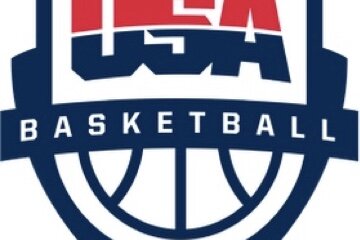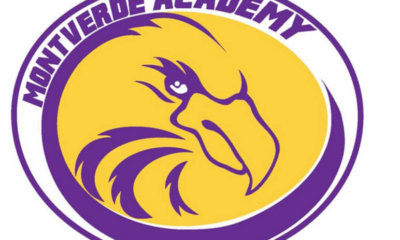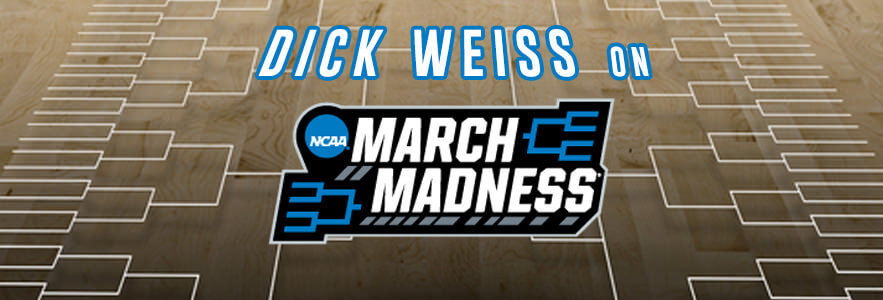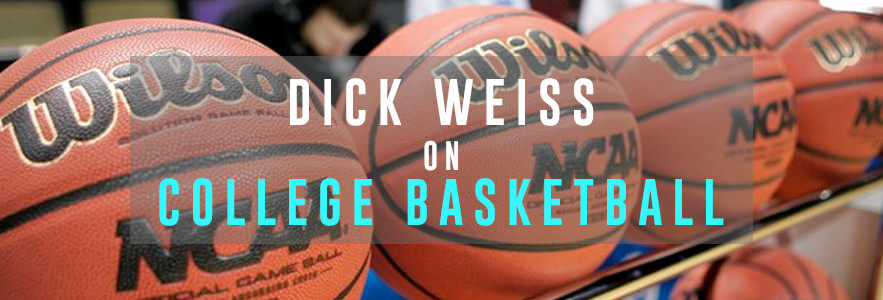
All of us are cautiously wading in murky and uncharted water these days. Personally, professionally, academically, athletically…even socially…the path we travel now is full of detours, speed bumps and unseen potholes never before imagined, let alone navigated in our lifetime. The full spectrum and reach of decisions already made and of decisions yet to come won’t be measurable any time soon, if ever.
I have no insight nor interest in even speculating on the potential impact that this Coronavirus Pandemic may have on us collectively as a society. Every individual and group of personal or professional connection is experiencing the pandemic in their own way with both shared and personal perceptions…and cost. Some of that cost thus far has been emotional and carries an entirely different price tag. It’s obvious on the athletic landscape many participants, coaches and fans are bitterly feeling shortchanged in lost opportunities.
Specifically from a basketball perspective, playing an entire season and getting to that final defining moment without the chance to finish what you started has to be a whole new level of athletic frustration. Whether you’re talking about the goal of high school state tournaments or the NCAA Tournament, having it tantalizingly within reach and suddenly no longer even existing as an option…there’s no words for that kind of loss. Yet at the same time you have to remember it was just that…a goal. No player signed a National Letter of Intent for National Championships. They signed to play intercollegiate basketball. Nobody lost that opportunity last week.
Sticking with the Division–I collegiate basketball conversation, there has been some noise made by a few somewhat shortsighted individuals about an extra year of eligibility for those current seniors not experiencing March Madness 2020. It’s easy to understand the disappointment on the part of the players, programs and communities, but it’s also an indisputable insult to minimize an entire season on the basis and results of three short weeks on the tail end for just a small percentage of participating athletes. If you disagree you might want to revisit the old journey and destination conversation once again.
As long as we’re cynically entertaining the thought, why is it that those calling for this option are only going to bat for the seniors? Didn’t the whole team lose the opportunity? Yes, underclassmen have future chances but didn’t seniors have previous opportunities? Any lost tournament avenues are equal so why not call for the extra time for the entire roster? Some athletes chose a program because they knew, without guarantees, they would most likely go to the tournament all four years. Is their perceived loss somewhat less than that of just the current senior class? It’s ludicrous to believe that any one opportunity is more valuable than that of another. In the big picture none are worth, nor do they warrant, the headache that would come with the effort to “make them whole” for the loss of this post-season.
Add up the annual post-season participating teams (144 including WNIT and WBI which are not even operated by the NCAA) and you come up with 40.6 percent of the programs competing on the Division-I level next season. For all intents and purposes this year’s seniors had their “season”. Yes, the annual “highlight” was canceled, but most athletes playing a complete regular season (championship caliber or not) participated in essentially 30 games, give or take. Adding that extra year of eligibility, as simple as it may sound, has extensive residual considerations those waving it’s flag may not be grasping.
That additional 60 percent of programs who wouldn’t have made any of the three tournament fields would rightfully have to have their seniors accommodated as well. Every program would be put in the position of funding those extra years. Let’s be honest, many Division-I programs don’t even operate at the permitted level of 15 scholarships as things stand already simply for budgetary reasons. Add in a returning class of seniors and somebody still has to pay the bill. Room, board, tuition, books and fees, cost of attendance, team travel costs, and much more. Hell, that doesn’t even address the quandary of another senior day for them or not. Who’s going to pay for another bouquet of flowers?? Yes, a very tacky joke but…to make a point…a little more here…a little more there on top of actual costs…and things begin to add up.
That’s just the financial context. There’s an NCAA legislative issue regarding that 15 scholarship limit for Division-I. It might be a simple solution for Big Brother to issue a one-time waiver but it would have to be very carefully worded with a limited shelf life. Any program’s number above 15 would logically have to match returning seniors. I assure you there would be multiple coaches short of that limit looking to sign additional scholastic or JC athletes in that one expanded class if they could get commitments to improve their rosters and still get back down to requirements by the following season. It’s a well-known fact that the nation’s best tax attorneys pale greatly next to college recruiters in exploiting loopholes or poorly written and narrow legislation.
As long as we’re talking about recruiting and next year’s potentially “enhanced” rosters, you would also have to re-open the door to current 2020 signees to change their commitments without penalty. If a point guard chose school A over school B on the basis of the roster and the opportunity for playing time you would have to afford her that choice yet again. And, in doing so, can and how do they take additional visits? In all fairness you have to respect their decision making process just as you’re defending those college seniors that had their championship landscape changed. True, playing time opportunities can always change with injury/redshirt scenarios and transfers but those circumstances are ramifications of the game itself and/or programs not the NCAA reshuffling the deck for a measly 126 total tournament games in a regular season of well over 10,000 contests.
Additional legislation would have to come regarding academic standing and enrollment. Degree progress as well as full and part time status would have to be addressed. Surely any athlete returning in this scenario would be close to or have completed her degree. A grad transfer already has and should be in a position of finishing another degree. What standards will they be held to? GPA? Would full time be a given or would we let them take that always challenging “spring term senior football approach”? Compliance has to add another group to monitor and hold to whatever standards are ultimately set. Still think this is a simple decision?
A few other detractors out there rightfully decry the extra eligibility possibilities on the basis of what it might mean in the record book. It’s one thing when a repeatedly injured player is granted a sixth year but giving an additional season of games to a relatively healthy player who’s already produced a full career’s body of work and the numbers begin to skew.
Thus far we’ve looked at this extra year inclination in a theoretical manner…If this…Then that…If that…In turn, this…and so on. How about the simple logical question of would a senior actually be willing to commit to another year. Again, you have to consider ALL Division-I seniors, not just those speculated to be tournament or post season participants. As an injury redshirt or transfer, many seniors are already on a fifth year and might see it as a great way to finish a Master’s degree. Others may see it as a great way to avoid joining the real world for another year on someone else’s dime. Should they stick around and join the “senior-sequel” class but get injured, is redshirting and returning yet again an option? It would have to be defined up front.
Common sense tells most of us that legitimate professional prospects are going to want to move on and start collecting a pay check. Passing on the draft and coming back in a traditional four year scenario is risky enough, adding another season of play on the basis of a missed post season tournament alone could damage draft status or, worse yet, damage body parts. And while we’re on the topic of “do I want to?”, what if a staff doesn’t want one, two or all of their seniors back? They could feel compelled to oblige solely for recruiting perceptions among the always objective grass roots landscape.
Nobody could ever imagine circumstances that would ever generate a conversation such as this. Just imagine those Spring sport athletes who had yet to scratch the surface of their seasons. Their eligibility is a whole different conversation with its own set of considerations the NCAA is currently reviewing. Sticking to basketball, they weren’t shortchanged a season or a year of eligibility. The season “officially” opened November 5th and was scheduled to end in New Orleans with the finals on April 5th. A small declining percentage of teams would have been playing the final three weeks had the season not been interrupted.
The situation is sad and it’s disappointing, but no crime has been committed. Seeing terms like “robbed” and “stolen” and having players deemed “victims” is asinine and a slap in the face of those who more accurately fit those descriptions. A small part of a very special opportunity in their life (intercollegiate athletics) has become a casualty of a societal crisis of a new magnitude. No one is at fault and no one is owed anything. As I write this virtually 8000 individuals have died of the Coronavirus worldwide. Let’s make sure we’re not dismissively putting tournament brackets opposite the obituaries in the newspaper.
Mark Lewis is a national evaluator and photographer for Blue Star Basketball as well as the lead columnist for Blue Star Media. Twice ranked as one of the top 25 Division I assistant coaches in the game by the Women's Basketball Coaches Association (WBCA), he logged 25 years of college coaching experience at Memphis State, Cincinnati, Arizona State, Western Kentucky and Washington State. Lewis serves as a member of the prestigious McDonald’s All-American selection committee as well as the Naismith College Player and Coach of the Year committees.

Latest Articles
-


Christopher Lawlor
/ 17 hours agoU16 USA Women’s Basketball National Team roster selected for 2025 FIBA AmeriCup in Mexico from June 16-22
COLORADO SPRINGS, Colo. — USA Basketball announced today the 2025 USA Women’s U16 National...
-
Christopher Lawlor
/ 17 hours agoU16 USA Men’s Basketball National Team roster chosen for 2025 FIBA AmeriCup next week in Juarez, Mexico
COLORADO SPRINGS, Colo. – The team is set and now for the games South...
-
Christopher Lawlor
/ 5 days agoNO REGRETS: Chris McNesby steps away from Roman Catholic (PA) basketball gig after second tenure with his alma mater; Bradley Wanamaker takes over coveted post
BENSALEM, Pa. – Chris McNesby has lived many lives within the Philadelphia Catholic League....
-


Events
/ 6 days agoMORE CHANGE: Montverde Academy (FL) hires Anthony Jones from nearby Orlando as girls’ head basketball coach of national program
BENSALEM, Pa. – For the second time in three months, Montverde (Fla.) Academy made...





